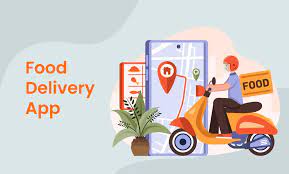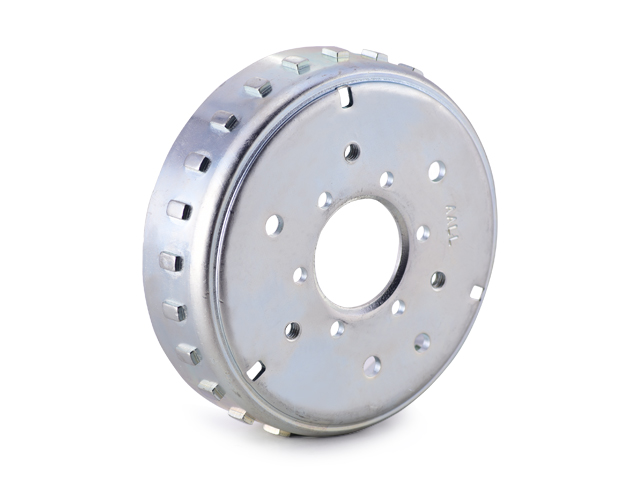
Choosing the Right Tech Stack for Food Delivery App Development
In today’s fast-paced digital age, food delivery apps have become an essential part of our lives. Whether it’s ordering a quick meal during a busy workday or organizing a party at home, these apps simplify the way we enjoy our favorite foods. If you’re considering venturing into the food delivery app market, one of the crucial decisions you’ll face is choosing the right technology stack. A well-thought-out tech stack ensures your app is not only robust and scalable but also provides an excellent user experience. In this article, we will guide you through the process of selecting the perfect tech stack for your food delivery app development project.
Understanding the Basics: What is a Tech Stack?
Before diving into the specifics, it’s essential to understand what a tech stack is. In simple terms, a tech stack is a combination of software tools, programming languages, and frameworks used to develop a web or mobile application. It includes both front-end and back-end technologies that work together to create a seamless user experience.
1. Define Your App’s Requirements
The first step in choosing the right tech stack for your food delivery app is to define your project’s requirements clearly. Consider factors such as the platform (iOS, Android, or both), features you want to implement, user interface design, and scalability needs.
2. Front-end Technologies
2.1 User Interface Frameworks
Choose a user interface framework that offers flexibility and responsiveness. Popular choices include React.js and Angular, providing dynamic and interactive user interfaces.
2.2 Design Libraries
Implement design libraries like Material-UI or Ant Design, ensuring a visually appealing and user-friendly interface.
3. Back-end Technologies
3.1 Programming Languages
Opt for robust languages like Python, Ruby, or Node.js, enabling efficient back-end development and smooth integration.
3.2 Databases
Select a reliable database system such as PostgreSQL or MongoDB to store user data, order history, and restaurant information securely.
4. Payment Gateway Integration
Integrate secure payment gateways like Stripe or PayPal, ensuring seamless and safe transactions for your users.
5. Geolocation Services
Incorporate geolocation APIs such as Google Maps or Mapbox for accurate tracking, enabling real-time order updates and delivery progress.
6. Push Notifications
Implement push notification services like Firebase Cloud Messaging, keeping users informed about order status, promotions, and discounts.
7. Security Measures
Ensure the safety of user data by integrating SSL certificates, encryption protocols, and secure API endpoints, building trust and credibility among users.
8. Testing and Quality Assurance
Invest in automated testing tools like Selenium or Jest to identify and fix bugs promptly, guaranteeing a smooth user experience.
9. Scalability and Performance Optimization
Optimize your app’s performance by using load balancing techniques, caching mechanisms, and Content Delivery Networks (CDNs), ensuring fast loading times even during peak usage.
10. Maintenance and Support
Plan for regular maintenance and updates by choosing technologies with active developer communities, ensuring long-term support and continuous improvement.
Conclusion
Selecting the right tech stack for food delivery app development is crucial for creating a seamless and efficient user experience. The choice of programming languages, frameworks, and tools significantly impacts the app’s performance, scalability, and overall functionality. It is essential to prioritize user-friendly interfaces, real-time tracking, secure payment gateways, and robust backend systems. To navigate this complex process, partnering with a reputable food delivery app development company is invaluable. Their expertise can streamline the decision-making process, ensuring the chosen tech stack aligns perfectly with the app’s requirements. With the right technology foundation, businesses can deliver exceptional services, enhance customer satisfaction, and thrive in the competitive food delivery market.
Frequently Asked Questions
Q1: Why is choosing the right tech stack important for food delivery app development?
The right tech stack ensures your app is reliable, scalable, and provides an excellent user experience, leading to higher customer satisfaction and business growth.
Q2: How can I determine the appropriate programming language for my app’s back-end?
Consider factors such as language popularity, community support, and your development team’s expertise to choose the most suitable programming language.
Q3: What role do payment gateways play in a food delivery app?
Payment gateways facilitate secure online transactions, allowing users to pay for their orders conveniently and ensuring financial data protection.
Q4: How can I ensure my food delivery app is secure from cyber threats?
Implement SSL certificates, encryption protocols, secure API endpoints, and regular security audits to protect user data and maintain app security.
Q5: What should I consider when selecting a database system for my app?
Consider factors like data structure, scalability, and ease of integration. PostgreSQL is ideal for relational data, while MongoDB is suitable for flexible, document-oriented data storage.



